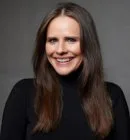
The biggest challenges faced by Women in Tech today
There are so many obvious reasons why having more women in tech can benefit the sector: It can lead to better problem-solving, increased revenue, greater innovation, more role models for future generations and the list goes on.
But if we pick out any research paper on the topic, it paints a clear picture that as a sector, the tech industry globally continues to be dominated by men, with women only making up a small portion.
The WomenTech Network, for instance, highlights that women currently make up less than a third of the world’s workforce in technology-related fields, and at the current pace of change it will take 131 years until the economic gender gap is closed.
Despite these numbers, female representation in the industry has been gradually improving. Deloitte previously estimated that women’s share in the global tech workforce increased by 6.9 per cent from 2019 to 2022.
However, it’s clear there are still opportunities for tech companies globally to do more to reduce the gender disparity in the tech sector. But what does more look like? According to McKinsey and Company, some immediate actions can include promoting more women into executive roles, inspiring tomorrow’s tech leaders today, overcoming the gender pay gap, and creating inclusive work environments that are flexible and equitable.
No doubt that shifting the needle is difficult and complex, and it’s a problem that won’t be solved overnight. But if tech firms remain willing to put in the hard work and continue to be aggressive with recruiting, hiring, retaining, and promoting women those numbers may continue to climb.
To provide further insight into this topic, we asked 41 female tech leaders what they believe are some of the biggest challenges faced by women in tech today. Below is a compilation of their answers.
Note: While we have roughly grouped the answers by the challenge they represent, we did so to make it easier for the reader to navigate what is, otherwise, a very long article. We want to acknowledge that almost universally the answers below highlighted multiple challenges faced, which could easily fit into multiple categories.
Table of contents
Recruitment

One of the biggest challenges faced by women in tech today is the recruitment process itself. The language used in job descriptions can be crucial in deciding whether to apply for a role. Words like ‘ambitious’, ‘aggressive’ and ‘fast-paced’ aren’t as neutral as one might think. There are a number of tools that can be used to ensure job descriptions are as unbiased as possible and we use them here at Fluent Commerce. This has to then carry through the hiring process, with interviews being held with multiple team members of different genders and there needs to be a diverse group reviewing hiring decisions.
Wendy Zveglic, VP of Engineering at Fluent Commerce

A foundational problem in organisational cultures is the existence of conscious, unconscious and confirmation bias ingrained in talent-facing processes, creating a formidable barrier to the flourishing of female talent. This reality undermines the idea of achieving authentic progress in Diversity, Equity, and Inclusion (DE&I). Organisations need to address significant disparities, particularly in realms like career advancement and the presence of diverse individuals in leadership and board positions.
IWD will continue to be a significant day for us to demonstrate solidarity, learn and evolve in our awareness. But DEI requires the organisation to acknowledge and celebrate the diversity of different communities not just on specific dates in the calendar but every day, year-round. By integrating accountability into their initiatives and a commitment to achieve equality in the workplace day-to-day, organisations stand to reap the opportunities from a more inclusive workforce.
Yenny Wong, Director, Talent Acquisition APJ & EMEA, New Relic

Despite efforts to build AI into hiring processes, challenges persist for gender discrimination, as evidenced by a 2023 American Staffing Association Workforce Monitor report where 34% of individuals perceive AI hiring tools as more susceptible to bias than human recruiters alone.
In parallel, our data of approximately 384,000 applicants who submitted a Take-Home Test between Jan 2021 and December 2022 reveals that female candidates are 2-3% less likely to pass than male candidates when grading is not anonymous.
Addressing both human and algorithmic bias specifically in hiring is crucial for creating a more equitable and inclusive environment for women in tech. This isn’t just about fairness, it’s about fostering diverse, high-performing teams that drive innovation and success.
While AI offers efficiency and standardization, human oversight remains critical. Without structured, equitable hiring practices, bias plagues the hiring process. By acknowledging and actively addressing these challenges, we can work towards a more level playing field for all, including women in tech.
Carin Van Vuuren, CMO, Greenhouse

At a time when women make up less than a third of the world’s tech workforce, it’s vital to address this disparity at the root of the issue by removing the perceived barriers to roles in technology, and encouraging women — before their careers even begin — to foster skills and interest in the AdTech industry.
The theme for this year’s International Women’s Day, “Inspire Inclusion” is a call to action that resonates deeply within our industry, where diverse perspectives are crucial for innovation and success. As a female at the start of my career, I found it invaluable to see other women in the roles I aspired to. Now, as a female in tech leadership, I know that women’s biggest hurdle is the ‘broken rung’ in being promoted to managerial roles, so staff inclusivity and development make a long-term difference.
For this reason, we have invested in building truly inclusive recruitment and training processes which have resulted in 44% of our workforce being female and 46% from diverse and international backgrounds. Additionally, we have also recruited from Code Your Future, who offer training for refugees and disadvantaged people to help them find their first roles in the UK workforce.
Sarah Lawson Johnston, Chief Revenue Officer at Covatic
Education

We first have to look at the education system. Challenging stereotypes remains important – schools should actively encourage diverse career options for both girls and boys as early as possible. Engaging women to share their professional journeys and highlighting various opportunities in technology to young people, particularly as they consider their academic paths for GCSEs, A-levels, and beyond, can significantly influence the next generation.
This effort aims to tackle the issue of underrepresentation and lack of diversity in the workforce at an early stage, with the goal of making a positive impact in the future. Rather than just addressing the immediate issue, the focus is on taking proactive steps that can lead to long-term enhancements.
This lack of representation and diversity is one of the factors that contribute to the tech sector being so daunting for female newcomers. When you add that you may encounter discrimination due to conscious or unconscious biases, the apprehension is heightened.
This is why it is important for women who are already well-established in the industry to share their career journeys openly. This will empower more women to embrace their desired career paths in the technology sector, rather than feeling limited by conventional expectations.
Zoe Broster, Head of Security Operations Centre – UK at Orange Cyberdefense

Frustratingly, women continue to be underrepresented in STEM fields, both in terms of educational pursuits and professional careers. Whilst progress has been made, for certain subjects, such as computer science, the numbers remain stubbornly low – in 2022/23 only 23% of students enrolled were female or non-binary. This underrepresentation can be attributed to a number of factors, including societal stereotypes, cultural expectations, lack of role models, and unintended bias in educational and workplace environments, and so the Government and businesses must remain committed to overcoming these hurdles and improving the imbalance.
Efforts have been made to address this gender imbalance, but as is often the way, this is easier said than done. International Women’s Day offers a moment, though, to reflect on what is working, and what more can be achieved. There have been a number of initiatives to encourage and support girls in pursuing STEM education and careers, which I welcome, as I believe that young women and other underrepresented groups are never going to see themselves pursuing careers in data, digital, tech or engineering when role models are lacking, and these industries still look overwhelmingly male and white. One part of the solution is to begin in the classroom and reframe how children view STEM topics and allow teachers and children to explore topics that are relevant, enlightening and engaging. Key to this is bringing industry and businesses into the classroom and showcasing how accessible STEM careers via routes such as apprenticeships can be. The super-power of apprenticeships to create a pipeline of diverse talent to begin their digital careers is well understood, but often underused. It is clear that by actively recruiting and training women through apprenticeships, businesses will benefit from a more balanced workforce.
Jo Bishenden, Managing Director for Apprenticeships at QA

International Women’s Day offers an opportunity to celebrate female role models and women’s achievements in the workplace. Yet while female representation in the technology industry is improving, women still make up less than a quarter of the workforce. Addressing this imbalance is vital, starting with breaking down the barriers for women and girls embarking on STEM careers.
One of the biggest challenges faced by women looking to get into the technology industry is the decision between qualifications and real-life experience. Many roles require individuals to have a university or college degree but for many women (and men) taking the time out to do studies and, in turn, relinquishing income can be a barrier that’s just too high – particularly if there are childcare responsibilities to accommodate. Heading to university can be an invaluable experience, but it’s important to remember that it’s not the only path for individuals considering a career in STEM. Many programmes, including our newly launched Apprenticeship Scheme, do not require a degree and instead offer the opportunity to gain hands-on, real-life experience within a range of disciplines in the technology industry and provide a source of regular income.
We have a number of senior female leaders who bypassed the university route – and so in the drive towards improving female representation in the industry, it’s important we champion a variety of access routes. That’s how we’ll attract talent from different backgrounds with unique perspectives and experiences, and have a positive influence.
Lindsey Rowe, Head of Purpose Programmes & Sustainability at SAP
Challenges faced by Women in Tech: Diversity

As a woman of colour, I noticed that the higher I rose in my career, particularly within leadership, the fewer people I saw who looked like me. This is often referred to as the ‘leaking pipeline’ – where women building their careers start to trickle off at middle management. Organisations need to offer a female-friendly culture to retain women – offering flexibility in terms of hours, but also the place of work. Hiring processes and decisions must be inclusive and include a range of people from different genders and backgrounds. Also, having great mentors and leaders should never be underestimated to help women believe in their own abilities and secure their rightful seat at the table.
The challenges associated with being a working mum also hit close to home. Juggling two demanding roles, one paid and one not, is a true superpower. Encouraging more men to take 6-12 months of paternity leave will help level the playing field for women. Organisations need to provide more part-time roles and job-sharing opportunities for men and women to come back to the workplace after having a child.
While there is a long way to go – I believe there has never been a better time to be a woman in technology. Both men and women are demanding greater female representation in leadership and in Tech/Data and AI roles – which can only mean a brighter future for women.
Liz Adeniji, Area Vice President, APJ at Twilio Segment

Today, women in the technology sector grapple with significant challenges, primarily centred around underrepresentation and retention. These critical factors significantly influence the perceptions of early-career women within the industry. Frequently, women’s expertise in technology faces unwarranted challenges, and their valuable contributions are poorly received or downplayed. The repercussions of such negative experiences have a profound impact on the retention of women in technology. Regrettably, many organizations and companies fall short of providing adequate support to women, neglecting crucial elements such as mentoring, coaching, training, networking, and advocacy.
Nevertheless, the tide can be turned when women find support from mentors and allies, witnessing more role models breaking barriers. This support network is pivotal in reducing the likelihood of women leaving the industry prematurely. To effectively address the retention problem, it is imperative to confront the gender disparities prevailing in the technology sector. This can be achieved through establishing policies and practices ensuring equal treatment. By actively addressing these issues, the technology industry can foster an environment where women not only thrive but also contribute meaningfully to advancing the field.
Sally-Ann Henry, Chief Technologist, ACM Research

You walk into a room, and you are the only female… that is the stark reality for many women in tech.
The silo of women in tech, who are twice as likely as the average woman to be the only woman in the room at work, is a major challenge and this impacts harder still for women from other intersections of diversity.
On a personal level, research shows women with inner circles of close female contacts are more likely to land executive positions with greater authority and higher pay.
This challenge affects women everywhere, not just those in tech.
Lack of female representation in tech is implicit with unconscious bias found in technological advancements. AI is no exception, with worse outcomes for women than men found in processes such as speech recognition, translation software and application processes for both jobs and education.
There can be a feeling of added pressure for women in tech to tackle this challenge alone. The impact of allyship and community groups to connect, sponsor and amplify the voices of women in tech cannot be understated.
With the knowledge that doubling the share of women in tech could lead to a GDP increase of €600 billion, the challenge of attracting and retaining women in tech is beneficial for the entire industry to tackle.
Olivia Arnold, Communications Manager, Women in Data

In the world of digital and tech, the challenge of fostering gender equality and broader diversity extends far beyond the superficiality of ticking off corporate compliance checkboxes. It’s about dismantling longstanding prejudices and creating an environment where every individual, regardless of gender, feels truly valued, seen, and heard.
At Storyblok, we prioritize creating opportunities for all team members to thrive, regardless of their employment status or life circumstances. Whether someone is working part-time, returning from parental leave, or embarking on new professional endeavours, our focus is on their potential to contribute to and grow with us. We believe that a culture of inclusivity is not measured by the clock but by the quality of engagement, enthusiasm, and innovative thinking each person brings.
This ethos of genuine inclusion and equality must permeate every level of our organization, from our daily operations to our overarching mission. It’s about driving a culture of equality and inclusion that transcends traditional corporate frameworks and becomes the very essence of our brand identity.
Marisa Pereira, VP of People & Organization at Storyblok

International Women’s Day is a good opportunity to have a look at the progress we have made in the tech industry. The picture, for the most part, is quite mixed. Initiatives to promote gender equality and diversity are at an all-time high, and there has been a notable change in startup culture. We are a long way from the ‘tech bro’ problems of five years ago and now I think the tech industry is one of the best sectors for women to work in.
However, we shouldn’t be complacent. There’s growing evidence of a backlash from a growing number of men who feel that the drive towards gender equality has tipped the scales against them.
This is why I think we need to evolve the conversation within tech to talk more about promoting a fully equal workplace for every group. Issues such as work-life balance, fair pay and promotions, flexible working, and training and development options are important to nearly everybody and are the key to giving everybody equal opportunities in the workplace. If we do solve these problems I think we will improve some of the more systemic imbalances within the tech industry – such as the underrepresentation of women and minority groups in senior management and leadership positions.
Daria Kepa-Green, Director of Marketing at Cytora

The marketing industry has traditionally been a place where women are well represented. However, this diversity has not necessarily translated to the marketing technology sector. For many years it suffered from the same problems as the wider tech sector – a discriminatory culture, a lack of women and minorities in leadership and poor overall diversity. Thankfully, in recent years a lot of this has changed. Women and other underrepresented groups are growing and, for the most part, workplace cultures have been transformed for the better. However, there is still a lot more that needs to be done. The number of women entering the tech industry is still far too small and the number of startups founded and led by women is woefully inadequate. If you look at the number of female VCs and investment in female-founded startups you can see just how big the gap really is.
The marketing technology sector has the potential to showcase how we can really achieve equality in the tech industry. There are a lot of talented women in marketing who, if given the right encouragement and support, could start their companies or find senior positions at martech startups. International Women’s Day is the ideal time to bang the drum for more women to become entrepreneurs or make the transition from traditional marketing companies into startups. I believe this can be achieved by talking less about the problems of underrepresentation and more about the opportunities for women within tech.
Olga Noha, Chief Marketing Officer, SplitMetrics

Women make up below 10 per cent of the construction industry in the U.S. The tech industry isn’t much better, with women making up less than one-third of the workforce. As for executive-level positions, women are even less represented; and when you combine the two into the Construction Tech industry, women are almost non-existent in leadership positions. The lack of female representation without a doubt affects discussions and decisions when it comes to funding conversations and new business opportunities, thus impeding potential business growth. This impediment is not just detrimental to women, it negatively impacts communities as a whole.
Women founders receive less than 5 per cent of all startup funding today, and being a woman CEO and co-founder in the Construction Tech industry means hearing “no” more than twice as often. Women need to have an indomitable spirit and thick skin to fight harder and speak confidently to get a shred of the respect naturally prescribed to men.
My experience has made me passionate about supporting women in their careers to work past all the gender challenges. Through my work with undergraduate students across the country in a variety of settings and mentorship opportunities, I’ve seen firsthand the new challenges women today face despite the progress women have made in the workforce. The challenges facing women are still numerous, but with persisting female leadership, industries like construction tech can grow significantly faster to the immense benefit of society as a whole.
Katy Reynolds, Co-Founder, President & CEO at Shibusa Systems

We know that it’s very challenging to design and implement systems that are highly resistant to malicious activity. We also know that diversity in teams produces better results. Addressing cybersecurity challenges requires a collaborative effort with plenty of diverse perspectives. By recognizing the value of diverse experiences and embracing multidimensional perspectives, organizations can unlock the collective potential of their cybersecurity expertise and pave the way for advancements in the field.
Caroline Wong, Chief Strategy Officer at Cobalt

While the tech sector has great potential to create opportunities for all, organisations need to invest in education, promote diversity and combat bias in order to be truly inclusive and equitable. Ultimately, the presence of diverse ideas and cultural perspectives will foster innovation, leading to thriving business performance.
It’s encouraging to see more women in senior management positions, however, organisations must ensure they’re supporting all working women, especially mothers, in their career progression. A good work-life balance is crucial to enabling women to achieve success in both areas, which in turn will create a better working environment, lead to higher employee productivity, improved morale and an increase in the overall profitability of the business.
Paula Gómez Anaya, Global Data & Adtech Director, Making Science
Leadership and mentoring

There are unique challenges and obstacles that we as women face that men cannot always relate to. I do believe some of these obstacles are similar, yet how we react and act to these is what makes it unique. Having a female peer or colleague you can talk to, who can validate that what you are feeling is ‘normal’, is priceless. Whether you’re a working woman with or without children, just starting your career or dealing with hormone overdrive at 50, having someone who can relate and understand, makes us feel more ‘normal’. And, for me, having someone to share ideas and how to deal with these obstacles is so valuable.
I recently had the opportunity to take the main stage at our annual sales kickoff event. Numerous women reached out to me to say how great it made them feel that I was included. They could see that what they thought may be impossible was, in fact, possible.
In the last few weeks in mentoring sessions with female colleagues who asked themselves: “What’s next for me?”, I shared that I had also asked myself that question. I explained how I recently approached this scenario in my career, with the net result being my new role. Honestly, I am now totally out of my comfort zone. The women I speak to can relate to that and take positivity from the fact that it isn’t easy but if you want it, go for it.
Belinda Jurisic, Vice President of Channel Strategy and Management at Veeam

Even though we continue to see progress in tech and other male-dominated industries, we still have ways to go in supporting women, whether it’s through mentorship for young women or, affording the same opportunities to grow into senior leadership roles.
I am passionate about coaching and mentoring professionally and personally. At work, I like to create informal rotational programs to expose my mentees to diverse experiences. This gives passionate, young women and men opportunities to explore new verticals and topics they might not have otherwise, to spark innovation and ideas. Outside of work, I’m a mother to a daughter and try to set an example of what a successful and well-rounded leader looks like. It’s not unusual for me to chat with her friends and give guidance as needed.
I believe mentoring and preparing young professionals to work alongside successful women in leadership roles is crucial. I encourage fellow women in tech to become mentors and sponsors for young adults entering their professional careers. We have the opportunity to empower the next generation of women in tech to thrive in a male-dominated landscape. At the same time, we can empower men to become allies, and entirely redefine what it means to be a woman in tech.
Anna Lo, Vice President of Supply Chain & Business Excellence at Cirba Solutions

In my 12-year career, I’ve experienced how the tech sector presents both opportunities and frustrations for women. On one hand, working in an industry that is still developing fosters a feeling of mutual growth, where the lack of precedent offers a chance for women to shape a role — even a company — around themselves. On the other, it can feel like women can’t win: we are expected to “go for it” as much as our male peers, but we are met with scepticism when we take on challenges because of our gender. This is why female mentorship and networks are so valuable in stereotypically male sectors such as tech; they offer spaces to share such experiences without judgment and receive guidance on navigating gendered expectations.
Inclusion has shifted from being an option to a “must”. One of the key values of any successful company today is respecting employees in all their differences, cultivating an atmosphere of trust both between employer-to-employee and colleague-to-colleague. Personally, I am particularly inspired by women in countries at war, like those in my own country of Ukraine, who have left jobs and families behind to defend their country or who keep working despite sleepless nights and screaming children. If these women can blaze their own trail in tech, we all can.
Karina Klymenko, Head of Creative and Compliance Global, MGID

While I believe we have come a long way in the tech industry, women still struggle with career growth because there simply aren’t enough women in leadership positions who can help facilitate. I was lucky early in my career to work for and with wonderful female leaders who not only advocated for me and my abilities but also provided valuable advice and mentorship opportunities. They identified areas where I could grow my skills, which in turn helped accelerate my growth. Those relationships served me well not just at that job, but have also sustained me throughout my career. Even when I feel doubt creep in, I know I have a group of amazing women who can validate my feelings, and connect me with more growth opportunities.
So much of the discourse is centred around women needing to see themselves reflected in their leadership team. While that is true, I argue we need to take it even further and give women more access to those senior leaders. Companies should be codifying mentorship programs where women just starting their careers can get valuable face time with women who can relate to their unique experiences. Providing those pathways for meaningful connection will foster the connections that support real growth, all while creating a strong pipeline of future female leaders.
Alissa Lydon, Product Marketing Manager, Dovetail

One of the biggest barriers to closing the gender gap in the technology industry is the lack of women in senior leadership positions. If women don’t see other women at C-level, it feels like a much steeper hill to climb. But if they see women with successful careers progressing into the boardroom, they have a clear pathway they can follow.
A key area that needs to be addressed if we want to see more women-led businesses is commitment to investments in funding for women-founded businesses. Companies founded solely by women receive less than 3% of all venture capital investments (HBR, February 2023).”
“Addressing these challenges requires decisive action. Boards and leadership teams must redefine the future of work with women in mind. A transparent evaluation of diversity, equality and inclusion data across the organization is required, looking at recruitment, the current workforce makeup, representation in management, salary assessments and the like. As well as mining this data, leaders must educate themselves on the macro trends that show the realities for women at work. For example, the World Economic Forum’s Global Gender Gap Report 2023 shows that just 20% of C-suite roles in the technology, information and media industry are filled by women.
Lauren Wetzel, COO, InfoSum

As a female CEO in the tech industry, I recognize firsthand the challenges faced by women leaders. Underrepresentation remains a significant hurdle, with women still scarce in tech leadership roles. Additionally, the lack of female mentors makes it difficult for aspiring women to envision their path to success. It’s crucial for the industry to address these issues and foster an environment where all talent, regardless of gender, can thrive and excel. I also think women can bring different skills/approaches to the table that result in better solutions/business.
Nicky Watson, Chief Architect and Co-Founder of Cassie

Women in tech face unique obstacles that can hinder their career advancement. As a woman of colour in the fintech industry, I know what it’s like to progress through an industry with few women or minorities in leadership roles. This lack of diversity means fewer female mentors who can provide guidance to the next generation of female leaders, on how to navigate barriers and boardrooms. Without mentorship from other women, it can be challenging to decipher unspoken rules or anticipate subtle obstacles that may impede advancement.
The need for more diverse women in tech leadership roles has gained wider acknowledgement in recent years. Many companies have implemented targeted programs to boost the representation and advancement of women and those from minority backgrounds. There is also a growing push for intersectional mentorship initiatives that connect diverse women with those who face similar challenges
Though progress is still needed, there are plenty of reasons to be optimistic. There is a wider understanding of the compounding unconscious biases women from underrepresented groups face. I am hopeful the collective action emerging today will help technology better reflect the diversity of the world it aims to serve. But true change requires those in positions of influence to provide greater advocacy, action and accountability when it comes to diversity and inclusion.
Jennifer Parker, Chief Commerical Officer, Convera

The tech industry has historically been skewed towards male dominance, but we are beginning to witness a shift towards inclusivity. However, it’s clear that huge efforts are still required to fully support and empower women. As a female leader at Varda, I’ve observed the undeniable impact of prioritising continuous learning, feedback, and education from the outset. It’s also evident that men play a crucial role in creating an equitable workplace environment.
The involvement of male colleagues goes beyond boardroom access; it’s about fundamentally transforming our corporate culture from within. Men have the opportunity to act as allies through mentorship, championing gender equality, and engaging in initiatives aimed at diminishing bias and enhancing diversity.
Moreover, the importance of early education cannot be overstated. Introducing girls to technology and encouraging leadership at a young age can significantly level the playing field, ensuring they view themselves as future leaders and innovators within the tech landscape.
Karolina Plaskaty, Chief People Officer at Varda

One issue is the lack of female leadership in technical positions. Having started in a very small tech startup to my position now at Dext in a larger product team, I’m proud of the number of female leads we have in technical positions; the balance across the industry, however, is still not where we would like it to be. We recognise how important it is for women to be visible in these senior roles, particularly for those entering the tech landscape and wondering what can be achieved.
Crucially, companies should ensure that more women occupy senior decision-making roles to make lasting changes in industry structure. Only then will shifts in company culture become evident, and challenges such as the gender pay gap and a lack of female mentors be addressed.
Helen Lloyd, Senior Product Operations Manager, Dext

Today, tech is a still very male-dominated field, and as a woman, it’s difficult to imagine being a part of it without seeing great examples of female tech leaders out there. It’s hard to aim to be someone you don’t see, after all!“Often, I’m in meetings where I’m the only woman and presenting to a room full of men – breaking through this isn’t easy, but it’s essential that women in tech continue to aim high and become those leaders for the next generation of female tech talent to look up to.
Zsuzsa Kecsmar, Co-Founder and Chief Strategy Officer, Antavo
Gender parity

Undoubtedly one of the biggest challenges women in the workforce face, particularly in the field of technology, is gender parity. Just look at the pay gap between men and women. While it is the smallest it has ever been at 84 cents to every dollar a man makes, the battle is far from over – especially for women of colour who are making between 78 and 90 cents to every dollar a white woman makes.
Promoting pay equality through clear career paths and aligned salary bands is a crucial step in bridging the gender wage gap. Transparent salary guidelines based on experience and qualifications reinforce equality. Highlighting wage parity efforts on social media boosts employee morale, and public perception, and helps to set an example for other organizations to follow.
Irina Soriano, VP of Enablement at Seismic

International Women’s Day is an opportunity to refocus on key areas in the wider advertising industry where women’s inclusion still has plenty of room for improvement. Throughout many organisations, the gender pay gap continues to run rampant and often flexible working structures that accommodate mothers balancing childcare and their careers are lacking.
Within our UK business, we have a strong representation of female leaders, which helps to inspire and educate from the top down, ensuring that women’s needs and achievements are properly acknowledged, and gender pay gap issues are addressed. Many organisations need to be more in tune with women and encourage them to bring their ideas and voices to the table without being penalised for it. To aid this, companies could provide women-specific onboarding sessions, workshops, and one-to-one mentoring and coaching opportunities that, for example, help the transition back into work after maternity leave, elevate women’s skill sets, or facilitate learning from other female leaders in a safe space.
Angelique Whittaker, UK Sales Director, Azerion

Systematic inequality in the tech sector often revolves around two issues: pay gaps and work-life balance. While addressing the salary gulf between men and women is an important industry priority, challenges caused by poor flexibility need especially urgent attention; with one in five working mothers having considered leaving their job due to the challenges of balancing work with childcare duties, and two in five having turned down a promotion or career development opportunity due to concerns it would not fit in with their childcare arrangements.
Allowing these obstacles to continue restricting options for women is damaging on multiple fronts. By failing to adequately support working mothers, companies are missing out on the invaluable skills they can bring, alongside professional expertise; including boundary setting, multi-tasking, and resilience. Creating homogenous teams also tends to result in a blunter competitive edge, as shown by the fact that organisations with above-average diversity scores generate up to 45% more revenue.
Promoting diversity and inclusion therefore isn’t just the right thing to do; it’s a smart business move. When firms bring people with different life experiences and perspectives together, they set the stage for innovation and creativity to flourish. Focusing on providing better flexibility around working times, locations, and structures is essential to yield these benefits, and ease the path for more women to join – and stay – in tech.
Claudia Mastromauro, VP of Sales, Strategy and Operations, UK, Aryel

Women are underrepresented in the tech sector, holding only about 25% of jobs at leading companies, despite making up nearly 50% of the workforce. This disparity has persisted for at least the last five years, with little indication of improvement. In my early career, I would have been surprised by these statistics, but now I understand the complex and varied reasons behind this dismaying lack of representation.
The most tangible and impactful reasons, in my opinion, are: (1) lack of role models, as people tend to gravitate toward fields where they see others like themselves; (2) unequal compensation and advancement, which can hinder career growth and motivation; (3) work-life balance issues, as environments that don’t accommodate employees’ lives outside of work disproportionately affect women, who are often primary caregivers.
While these challenges are significant, I believe they are not insurmountable. Companies should take steps to address these challenges, recognizing that these issues not only impact women but also negatively affect everyone. Diversity of thought is key to innovation, and inclusive company cultures that consider employees as whole people with lives and responsibilities, will positively impact all employees. By continuing the conversation and working towards better outcomes, I am optimistic about the future of gender representation in the tech industry.
Nia Castelly, Co-Founder of Checks by Google
We’ve had the pleasure of interviewing Nia before, which you can read here: “Don’t cut corners early on if it may come back to bite you later”

Perhaps the most pervasive challenge is our own internal dialogue; we often underestimate our abilities and allow self-doubt to dictate our actions. This internal struggle is magnified by the external reality of navigating a male-dominated industry where our presence is less common and, at times, less welcome. The biggest mistake, however, is not in facing these challenges head-on, but in allowing them to stop us from even trying. The gender imbalance in tech should not be seen as an obstacle, but as a call to action for us to step forward, make our mark, and support each other along the way.
As we strive for progress, let’s remember that our value and potential are not determined by the number of women currently in the field, but by the quality of our ideas, the strength of our resolve, and the impact of our contributions. This International Women’s Day, let’s pledge to break through the self-imposed and societal barriers and inspire a future where women in tech are not just participants, but leaders who shape the industry.
Susanne Haspinger, Co-Founder and COO, Hololight

For me, the tech industry offers numerous accommodations that facilitate being a woman, as well as being a business professional. Balancing family and career can be incredibly challenging. However, the flexibility prevalent in tech, aimed at attracting top talent, enables me to manage both aspects of my life effectively. I believe the tech industry offers significant benefits for women in business, especially when compared to some other industries.
Despite this, there still remains a noticeable lack of women in some of my surroundings. I attribute this to societal norms dictating what girls should pursue and enjoy, as well as cultural expectations for boys, which perpetuate perceived gender disparities in interests. My primary challenge lies in raising my daughter and son against a backdrop of imposed societal norms. This requires a great deal of dexterity and diplomacy which I’m sure will resonate for many parents and caregivers.
In my work environment, I am very cognizant of what each person needs to be successful. One concern I have is that many organizations believe promoting women requires a one-size-fits-all approach, which is not the case. Each person, including women, has different needs due to their circumstances and life events. I believe tech companies need to continue to focus on flexible approaches that are not stigmatised.
Danielle Supkis Cheek, VP, Head of Analytics and AI, Caseware

In industries like public relations and consumer goods, there are many female decision-makers, but technology remains male-dominated. In an ideal world, women wouldn’t have to take additional steps to establish credibility or assert themselves in male-dominated technology spaces. Still, the reality is that the tech industry has not yet reached a place where these challenges don’t exist, especially in customer interactions where gender dynamics may be at play. Women in tech are tested every day regarding their knowledge, understanding of customers, or even their demeanour.
The key is finding to be direct and transparent. There may be perceptions about a woman’s toughness, but ultimately, the ability to deliver what customers truly want and make them feel empowered in the process is where our strength lies. It’s about finding that balance between assertiveness and empathy to drive meaningful outcomes.
Hannah Stern, Chief Commercial Officer, BuildingMinds
Challenges faced by Women in Tech: Inclusivity

The biggest challenge faced by women in tech today is around inclusivity. We’ve increased the diversity of workforces in tech, bringing more women into what has historically been a male industry, but we’re still not seeing this diversity represented in the most senior of roles. One of the ways we can future-proof inclusivity and support women to thrive in the workplace is by nurturing learning opportunities and developing the people who are entering the industry from less-represented groups.
Organisations simply sharing a set of online lectures or giving access to offline materials for their employees to study in their own time is not good enough, and negatively impacts both a work-life balance and active learning opportunities. Above all, this learning framework indicates to women, and other less-represented groups in the sector, a lack of interest in their professional development. Tech leaders who want to demonstrate a commitment to their employees need to invest in bespoke tech coaching that is targeted to the needs of their employees and takes place within paid workplace hours.
Hayley McCarthy, Co-Founder of Skiller Whale

In the ever-advancing tech sector, where innovation and diversity are ostensibly valued, women often encounter distinct obstacles. Navigating this domain as a female professional, I’ve faced two significant challenges: intimidation from male colleagues and the industry’s lukewarm approach to inclusivity.
Despite strides towards gender equality, women in technology are frequently subjected to a level of scrutiny seldom directed at their male counterparts. This often takes the form of incessant questioning about our technical knowledge or qualifications, undermining and dispiriting us. It’s not merely about demonstrating our competence; it’s about contending with the pervasive stereotype that women are somehow less suited to technological roles.
Furthermore, the tech sector’s commitment to inclusivity often appears superficial, more about ticking boxes than genuinely embracing diverse perspectives. Events and forums, while outwardly open, sometimes fail to actively seek or engage with new voices, especially those of women and other marginalised groups. This tepid approach to inclusivity not only curtails the diversity of thought but also perpetuates a cycle of exclusion, making it challenging for women to establish their presence and perspectives in technology.
Moving forward, it’s crucial for the industry to not only acknowledge these challenges but to actively dismantle the barriers, fostering an environment where women’s contributions are encouraged, supported, and valued, driving both individual and industry-wide innovation and growth.
Inge Hunter, CEO of Clue Content

Creating an inclusive workplace should always be a key priority for any business leader. While this absolutely applies to gender – for example, integrating more women into traditionally male-dominated sectors, like tech – it also refers to the inclusion of different segments of diversity such as cultures, languages, values and working norms.
Amid today’s dynamic landscape of M&A activity, fueled by ever-evolving technology trends we’re seeing more companies facing challenges in unifying their employees from different companies, backgrounds and countries. It is vital to implement the right strategies to ensure a cohesive organisation. By embracing a ‘one-size-never-fits-all’ approach, businesses can build a culture based on transparency and mutual respect, with a range of different working styles and perspectives actually giving them a competitive edge.
Alix de Carné Carnavalet, Global Director of Talent Acquisition and DE&I, Equativ

Women in tech often face challenges and have to tackle industry stereotypes. Recognising, using and appreciating the natural soft skills that position women well for leadership, such as effective communication and collaboration, is crucial to eliminating these out-of-date notions.
Overcoming these hurdles involves fostering an inclusive environment that values diverse perspectives and ensuring equal opportunities for professional development. The industry can benefit from acknowledging the unique qualities that women can contribute. Companies play a vital role in this process by implementing measures to address bias, establishing mentorship programs, and promoting an organisational culture that encourages the full participation of women in the tech sector. By emphasising these aspects, the industry can create a more inclusive landscape that allows women to contribute their skills and expertise in all areas of the tech industry.
Connie Moser, CEO, Navenio

This International Women’s Day, the UN is highlighting the need to invest in women to build inclusive societies to shape a better future for all. We believe one of the more important dimensions of this call to action is the need to shift to a green economy and care society. The existing economic system and climate crisis amplify inequality, disproportionately impacting women and marginalised communities.
As more brands realise the critical role they play in supporting people to reach their full potential as an inclusive and egalitarian society, we are able to collectively foster a more harmonious relationship between commerce and caring for our people and planet. A healthy environment and social equity are interconnected components of a truly sustainable and regenerative future. Contributing to positive change lies in aligning your efforts with your brand’s vision, goals and legacy. Only then are we able to begin our journey to regenerative sustainability and in the process, enable more individuals, including women, to flourish.
April Chow, Senior Research Director, APAC, Human8

Representation and inclusion are vital for every woman’s personal development. Throughout my career, I have focused on supporting women in working towards a world where no woman has to be the only female voice in the boardroom. Through mentorship, I help women with writing and reviewing resumes, preparing for interviews, and even negotiating offers, something that a lot of women are struggling to consider as an option. For those still early in their careers, I encourage you to find women who motivate you, support you, challenge you, and lift you up – hold onto them and let them help you through your journey.
Today when I see equal representation – or even a female majority – in boardroom situations, I take time to reflect on the impressive amount of change that has happened since I started my career. We need to all encourage, motivate and inspire each other to drive true inclusion. Representation not only inspires individuals but makes business sense as it leads to better financial returns for companies.
Emily Barfuss, Chief Marketing Officer, Ogury

In my 15+ years of experience working across multiple countries, I believe inclusivity has improved considerably. However, there is a long way to go as it’s a complex subject that challenges several long-standing societal norms. This International Women’s Day, organisations should strive to back up their inclusive values with actions to drive significant progress.
Looking into my specialisation, I’m pleased to see that Google Cloud is a platform with a strong focus on diversity, equity and inclusion. Even without prior experience, a wealth of resources are available for women seeking a career in this space, including free courses and networking opportunities aimed at creating a supportive and inclusive community. It’s a testament that the tech industry is moving in the right direction, and I would encourage women not to be afraid to jump in.
Caroline Quintanar, Partner Engagement Manager, Google Cloud, Making Science
Recommended reading: Bias in AI: what 200 images of people at work reveal
NEXT UP

Italian energy firm Snam minimises e-waste with HPE Asset Upcycling services
Snam has selected HPE Asset Upcycling services to ensure end-of-use technology is refurbished and reused wherever possible
Adrian Nistia, Brand & UI/UX Designer at Omniconvert: “The accessibility of software has allowed a larger number of people to explore design”
We interview Adrian Nistia, Brand & UI/UX Designer, currently leading the design department at Omniconvert.

James Palmer, VP of Sales at Seismic: “AI doesn’t hinder human-to-human relationships in sales”
We interview James Palmer, VP of Sales at Seismic, a leader with 20+ years of experience building global and regional go-to-market strategies

